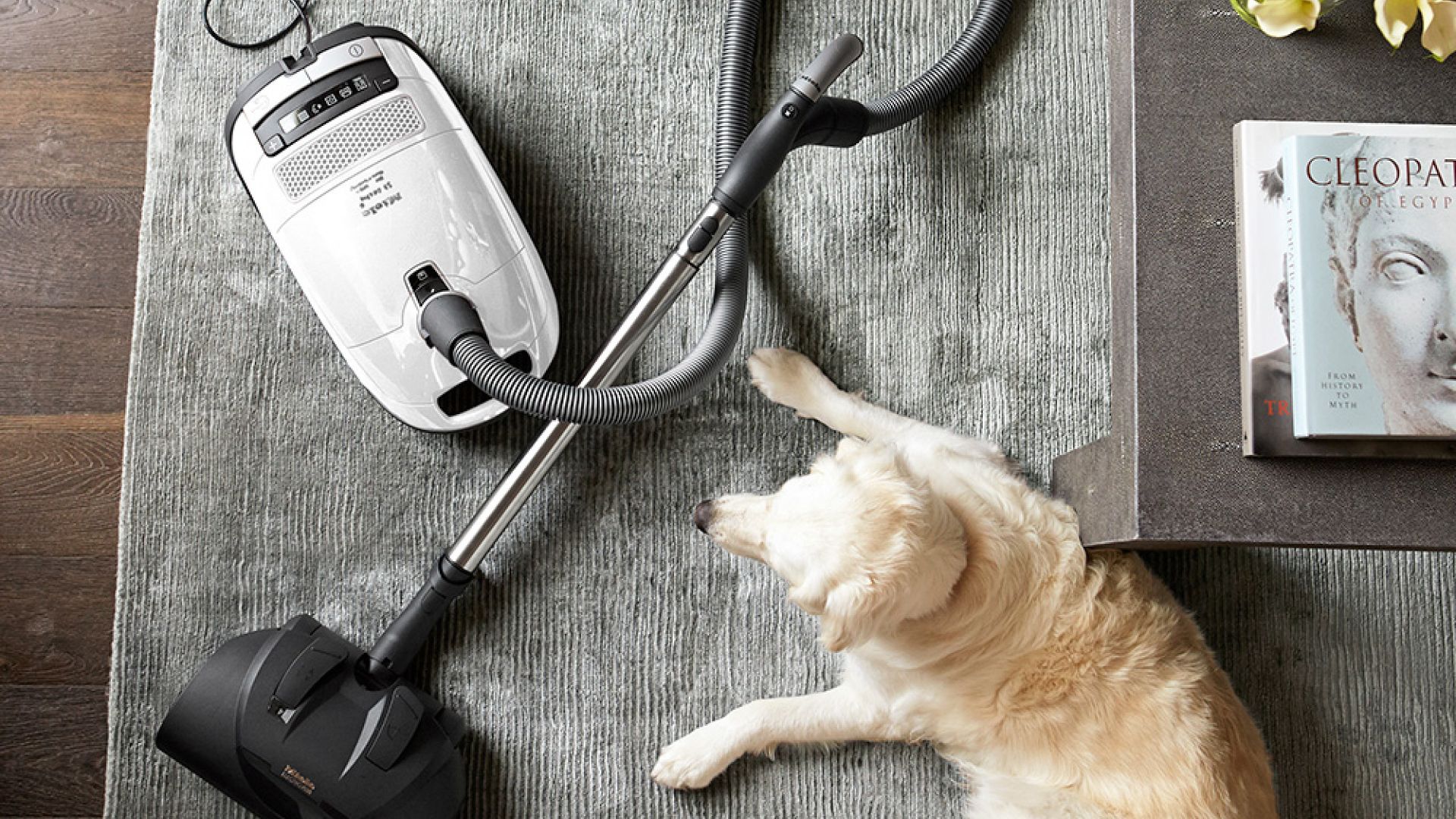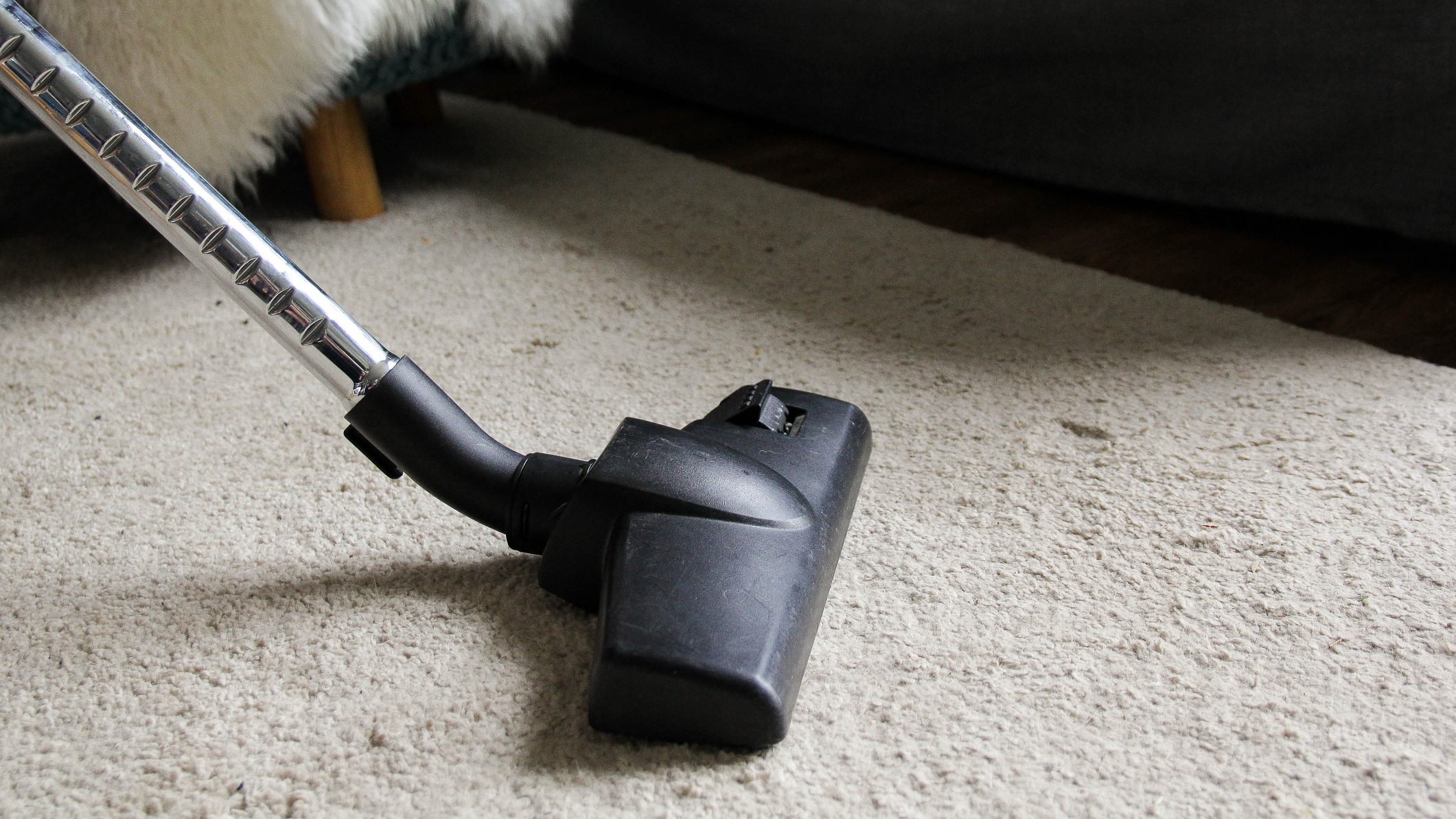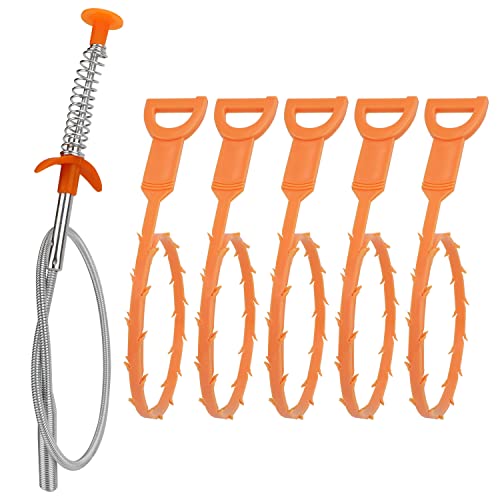How to clear a blockage in a canister vacuum using a quarter – a smart trick enjoyed by vacuum experts that takes just minutes
The repair team at Miele have been fixing vacuums for as long as their vacuums have existed, and this hack on how they locate and clear a blockage quickly has been a game-changer for our editors

Experiencing a blockage in your appliance while vacuuming is never fun. You're already working hard to get the chores done, then the machine you rely on is giving up, suction fading by the second and you have to down tools to investigate.
The good news with a canister vacuum is there is a smart have beloved by engineers and our editors alike and all you need is a quarter to locate the blockage and a long item such as broom handle to get it moving it again.
A vacuum blockage will affect how often you should vacuum, as less-than-optimal vacuum performance will leave dust and debris on your floor even after you've cleaned. And whilst blockages can happen whether it's an upright or canister vacuum, the process for dealing with a canister clog is a little different.
How to clear a blockage in a canister vacuum in minutes

Before getting started, make sure you unplug your vacuum for safety.
There's an easy trick to check whether the blockage is in any of the below canister vacuum components. After experiencing a sudden blocking in her Miele pet hair vacuum, Punteha van Terheyden, head of solved at H&G, called the vacuum company's support line.
She says, 'The engineer gave me a brilliant tip to figure out which part of my vacuum the blockage had occurred in. I first took apart the various sections of my canister vacuum, from the head to its various metal or bendy piping elements. Then I held each part vertically with one hand, and dropped a quarter through it. If it popped out the other end, that section didn't have a blockage.'
Whether the clog is in the hose, cleaner head, canister or any of the attachments, this is a great way to check locate it – just make sure the coin doesn't get stuck inside the vacuum.
Then, all that's left is to clear the blockage. If it's in the hose, you can use something long like a broom handle, but you might have to use something more flexible like a drain snake. The Amazon Basics Drain Clog Remover is a perfect choice as it comes as a set of six, with one that's long enough for a whole canister hose, and five others for smaller, more detailed tasks.

One long, stainless steel snake and five plastic ones should keep you covered for a whole variety of clogs, not just for your vacuum cleaner.
Sometimes, a combination of air pressure from an air compressor and gentle manual pushing does a great job. If you don't already own one, an air compressor is another handy tool to keep at home for much more than cleaning your vacuum. You can refill tires, clean computer keyboards and remove debris from your electronics.

This air compressor from Woowind is completely portable with a max pressure of 150PSI. Aside from providing a strong stream of air to clear blockages and clean electronics, you can use it to pump up your bike or car tires.
A drain snake or air compressor will also work wonders if the blockage is in the floor head or any of the attachments, as they're easy to reach from either end. Once again, see whether a quarter will feed through and, if it doesn't, you'll know what the culprit is. These are the parts that spend the most time on the floor and picking up debris, so it's important not to neglect them.
The canister itself has a few working components, like the dust bag/dust bin, motor, fan, rotating brush, exhaust port and intake port. It's unlikely the clog will have made it to the motor or brush, but its worth checking wherever you can in a way that's aligned with the manufacturer's disassembly guidelines.
Once you've located it, use one of the above plastic drain snakes as their rigid teeth can pull on and catch hair and debris.
Then finally, and if all else has failed, clean your vacuum filter. A dirty filter can make your vacuum behave as if it's clogged, but really it's in need of a refresh or a replacement.
'Both pre-motor and HEPA filters will need replacement and cleaning. It is important to keep in mind though that a filter that is blocked may act as causing an obstruction and dramatically cut the suction power. If they are washable, you can use water to clean them and allow them to fully dry before putting them back,' says Daniel Anderson, professional cleaning expert and CEO of Gorubbishgo.
How to prevent blockages in canister vacuums
Once your vacuum is finally free of any blockages, you'll save yourself a great deal of time and effort by learning how to prevent it from happening in the future.
'I've found that the best way to prevent blockages and clogs in canister vacuums is just to pay attention to what you're vacuuming,' shares Larry Snider, VP of operations of Casago. 'It's really important with the longer hose of a canister vacuum, for instance, to avoid vacuuming up anything wet, since it can easily stick to the inside of the hose and cause a blockage.'
'Additionally, tons and tons of pet hair can be an issue for the same reason. And pay attention to how full your vacuum is getting, making sure to empty it out frequently. This will improve suction and make it less likely the hose will become clogged,' he finishes.
Depending on how often you vacuum with pets, you might find that your vac gets clogged more than you'd like. Consider the best vacuum for pet hair to help avoid the pain.
Sign up to the Homes & Gardens newsletter
Design expertise in your inbox – from inspiring decorating ideas and beautiful celebrity homes to practical gardening advice and shopping round-ups.

Dan is the Home Tech Editor for Homes & Gardens, covering all things cleaning, smart home, sound and air treatment across the Solved section. Having worked for Future PLC since July 2023, Dan was previously the Features Editor for Top Ten Reviews and looked after the wide variety of home and outdoor content across the site, but their writing about homes, gardens, tech and products started back in 2021 on brands like BBC Science Focus, YourHomeStyle and Gardens Illustrated.
They have spent more than 200 hours testing and reviewing vacuums for Homes & Gardens, and have even visited Dyson's engineering labs for the full low-down of the ins and outs of our trusty cleaners.
Dan has a BA in Philosophy and an MA in Magazine Journalism. Outside of work, you'll find them at gigs and art galleries, cycling somewhere scenic, or cooking up something good in the kitchen.
-
 This ultra-tiny 'luxury villa' is sold on Amazon – estate agents say this unconventional, pre-assembled home is more than a novelty
This ultra-tiny 'luxury villa' is sold on Amazon – estate agents say this unconventional, pre-assembled home is more than a novelty'Tiny homes are more than a trend. They’re part of a bigger conversation about how we live' – this foldable house is one of many shaping 2025's real estate industry
By Megan Slack
-
 You won’t believe these chic coastal backyard finds are from ALDI – and everything’s under $50
You won’t believe these chic coastal backyard finds are from ALDI – and everything’s under $50Hampton's style on an ALDI budget
By Charlotte Olby
-
 Engineers reveal the 4 common faults they're always fixing in Shark vacuums – and how you can prevent them from happening
Engineers reveal the 4 common faults they're always fixing in Shark vacuums – and how you can prevent them from happeningThese checks will restore your Shark vacuum to its former glory
By Dan Fauzi
-
 5 things professional cleaners always do to overcome a cleaning roadblock – they're surefire ways to feel 'motivated and clear-headed' experts say
5 things professional cleaners always do to overcome a cleaning roadblock – they're surefire ways to feel 'motivated and clear-headed' experts sayGet your cleaning schedule back on track
By Ottilie Blackhall
-
 Dyson V15 Detect vs Dyson V12 Detect Slim – which is right for your home?
Dyson V15 Detect vs Dyson V12 Detect Slim – which is right for your home?I've spent more than 200 hours testing vacuum cleaners and these two cordless Dysons are my personal favorites
By Dan Fauzi
-
 I've spent over 200 hours testing vacuums and swear by my two Dysons – this is how I properly clean a Dyson vacuum filter for longer-lasting appliances
I've spent over 200 hours testing vacuums and swear by my two Dysons – this is how I properly clean a Dyson vacuum filter for longer-lasting appliancesYour Dyson vacuum will last much longer and clean at its best
By Dan Fauzi
-
 Do cleaning products expire? Professional cleaners warn time could make them ‘less effective, and in some cases, irritating to use’
Do cleaning products expire? Professional cleaners warn time could make them ‘less effective, and in some cases, irritating to use’For the best results, it pays to stay on top of the timeline of your cleaning products
By Chiana Dickson
-
 How to clean a patio – 6 different methods, and when you must use a chemical cleaning agent
How to clean a patio – 6 different methods, and when you must use a chemical cleaning agentFrom manual scrubbing, natural solutions or calling in the pros, industry experts reveal the benefits and considerations of each method
By Andy van Terheyden
-
 5 surprising but brilliant ways to clean with old socks – from perfectly buffing stainless steel to deterring pests naturally and more
5 surprising but brilliant ways to clean with old socks – from perfectly buffing stainless steel to deterring pests naturally and moreTackle dust in tricky corners, clean your mirrors and even banish bad odors with those rogue single socks
By Andy van Terheyden
-
 5 things people with clean upholstery always do – they're simple, quick and oh-so-effective
5 things people with clean upholstery always do – they're simple, quick and oh-so-effectiveEnsure your furnishing looks clean year-round with these expert tips
By Seraphina Di Mizzurati